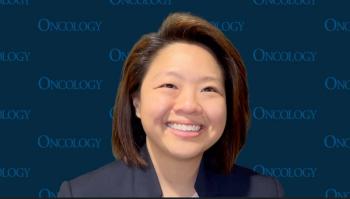
- ONCOLOGY Vol 15 No 3
- Volume 15
- Issue 3
Molecular Responses With Fludarabine, Mitoxantrone, and Dexamethasone Plus Rituximab Chemoimmunotherapy for Stage IV Indolent Follicular Non-Hodgkin’s Lymphoma
Stage IV indolent lymphomas are currently considered incurable disorders. However, the achievement of an early molecular remission, as determined by the bcl-2 polymerase chain reaction (PCR) assay, is associated with a better outcome. In view
Stage IV indolent lymphomas are currently considered incurabledisorders. However, the achievement of an early molecular remission, asdetermined by the bcl-2 polymerase chain reaction (PCR) assay, is associatedwith a better outcome. In view of its excellent correlation with failure-freesurvival, the PCR technique has the potential of providing a tumor marker thatcan be used as an early surrogate end point.
In the search for a treatment that could result in a highermolecular response rate, we designed a study that combines eight courses of FND(fludarabine [Fludara], mitoxantrone [Novantrone], dexamethasone [J Clin Oncol14:1262, 1996]) plus the monoclonal antibody rituximab (Rituxan). One of theaims was to determine which schedule of rituximab/chemotherapy is superior. Werandomized between the potentially synergistic concurrent antibody/chemotherapycombination vs delayed administration of antibody (which takes advantage of therecovery of immune function at the time of rituximab administration).
We have entered 134 previously untreated patients with stage IVindolent non-Hodgkin’s lymphoma (NHL) to either concurrent rituximab + FND(rituximab given on day 1 of the first six FND courses) or to delayed FND ®rituximab (FND first, followed by rituximab ´ 6starting 12 months later). All patients received interferon ´1 year. After eight courses of FND we have baseline PCR data on 95 follicularNHL patients, 70 of which (74%) had bcl-2 rearrangement in peripheral blood (PB)and bone marrow (BM). Median follow-up is 12 months. Of the 70 patients atbaseline, PCR data are currently available after 6 months of treatment in 39 PBand 32 BM, and at 12 months in 27 and 23, respectively. The data are shown inthe table below (6- and 12-month data in the delayed arm are before rituximabadministration):
CONCLUSION: At 6 months a higher molecular response in PB wasseen in the concurrent rituximab + FND arm; the same trend was seen in BM, butat 12 and 18 months the molecular response rate was equivalent for both arms.The projected failure-free survival (FFS) rate at 24 months is 88% for PBmolecular responders at 6 months vs 34% for nonresponders (P = .05). Atthis point there is no significant difference in FFS between the two arms of thestudy, although the trend favors the concurrent arm.
Articles in this issue
almost 25 years ago
State of the Art of Non-Small-Cell Lung Cancer in the New Millenniumalmost 25 years ago
Novel Approaches in the Treatment of Non-Small-Cell Lung Canceralmost 25 years ago
Triplet Combination Chemotherapy and Targeted Therapy Regimensalmost 25 years ago
Gemcitabine and Nonplatinum Combinations in Non-Small-Cell Lung Canceralmost 25 years ago
Gemcitabine for the Treatment of Non-Small-Cell Lung Canceralmost 25 years ago
Gemcitabine in Combination With New Platinum Compounds: An Updatealmost 25 years ago
Treatment of Elderly Patients With Non-Small-Cell Lung Canceralmost 25 years ago
Optimizing Chemoradiation in Locally Advanced Non-Small-Cell Lung Canceralmost 25 years ago
Irinotecan in Gastrointestinal MalignanciesNewsletter
Stay up to date on recent advances in the multidisciplinary approach to cancer.


















































































